Tight shoulders are a common complaint, especially for those who sit at desks for long periods or engage in repetitive overhead activities. According to “A systematic review of the global prevalence and incidence of shoulder pain” (Doorn et al., 2022), “a significant proportion of the population across the world will experience shoulder pain daily, yearly, and throughout a lifetime” with estimates generally higher in high-income nations like Canada.
Self-myofascial release (SMR) with a lacrosse ball is a simple yet effective way to target these tight spots and improve shoulder mobility. This guide will walk you through the technique of lacrosse ball shoulder release, addressing common trouble areas and providing modifications for different needs.
Benefits of Lacrosse Ball Shoulder Release

-
Improved Mobility
By releasing tension in the muscles and fascia (connective tissue), lacrosse ball massage can increase your shoulder’s range of motion. This can improve athletic performance and daily activities.
-
Pain Relief
Tight muscles can be a source of pain. SMR helps to break down trigger points (hypersensitive areas within the muscle) and improve blood flow, leading to pain reduction.
-
Posture Enhancement
Tight shoulders can contribute to poor posture. Lacrosse ball massage can help to lengthen shortened muscles and improve your overall posture.
-
Increased Performance
Improved shoulder mobility and reduced pain can lead to better performance in activities that require shoulder movement, such as throwing, swimming, and weightlifting.
-
Stress Reduction
Tightness in the shoulders can be linked to stress. SMR can help to relax the muscles and promote feelings of relaxation.
Lacrosse Ball Shoulder Release Techniques
-
Equipment
- Lacrosse ball
- Wall (optional)
-
General Tips
- Breathe deeply throughout the process.
- Apply gentle to moderate pressure. Pain is a signal to ease off.
- Move slowly and hold on tight spots for 20-30 seconds.
- Repeat each technique 2-3 times per side.
- Listen to your body and modify as needed.
-
Targeting the Upper Back
-
Against the Wall
-
Place the lacrosse ball between your upper back and the wall. Find a tender spot and lean in gently, applying pressure with your body weight. Roll up and down along your shoulder blade, focusing on tight areas.
-
On Your Back
Place a lacrosse ball under one shoulder blade, with your elbow bent and pointing towards the ceiling. Gently roll back and forth, focusing on tight spots. Repeat on the other side.
-
Targeting the Pec Minor
-
On the Floor
-
With your arm bent at a 90-degree angle and hand resting on the floor in front of you, position the lacrosse ball between your chest and armpit. Lean your body weight onto the ball and roll back and forth, focusing on tender areas.
-
Against the Wall
Similar to the upper back technique, place the ball between your pec minor and the wall. Lean into the ball and roll side-to-side, focusing on tight spots.
-
Targeting the Latissimus Dorsi
-
On Your Side
-
Place the lacrosse ball under your armpit, with your arm extended overhead. Rest your head on your arm or a rolled towel. Gently roll back and forth on the fleshy part of your latissimus dorsi. Repeat on the other side.
-
Standing
Stand with the lacrosse ball between your side and a wall at shoulder height. Lean into the ball and roll up and down, focusing on tight areas.
-
Targeting the Anterior Deltoid (Front of the Shoulder)
-
On Your Stomach
-
Place the lacrosse ball under your front shoulder, with your arm bent at a 90-degree angle and palm facing down. Gently roll side-to-side, focusing on tight spots. Be cautious here, as the front of the shoulder can be sensitive.
-
Against the Wall
Stand with the lacrosse ball between your chest and the wall, slightly above shoulder height. Lean into the ball and roll side-to-side, focusing on tight spots.
-
Modifications
-
Tennis Ball
-
If a lacrosse ball feels too intense, start with a tennis ball.
-
Towel
Place a towel between your skin and the lacrosse ball for a gentler massage.
-
Movement
While applying pressure with the ball, gently move your arm through its range of motion.
Who Can Benefit from Lacrosse Ball Shoulder Release?

This technique offers a helping hand to a wide range of people experiencing shoulder woes:
-
Athletes
From throwing sports like baseball to overhead activities like weightlifting, athletes often battle tight shoulders. Lacrosse ball massage can improve their range of motion and performance.
-
Desk Workers
Sitting hunched all day can lead to tight pec muscles and rounded shoulders. SMR can help lengthen these muscles and improve posture.
-
People with Limited Mobility
Whether due to inactivity or previous injuries, limited shoulder movement can be frustrating. Lacrosse ball massage can help break down tightness and increase your range of motion.
-
Those with Pain
Tightness often translates to pain. Self-massage can target trigger points and improve blood flow, leading to pain relief in the shoulder and potentially even headaches.
-
Stress Holders
Tightness in the shoulders can be linked to stress. By relaxing the muscles with SMR, you can promote feelings of relaxation and overall well-being.
When to Seek Professional Help
-
Sharp Pain
If you experience sharp pain during self-massage, stop immediately and consult a healthcare professional.
-
Pre-Existing Injuries
If you have a history of shoulder injuries, such as rotator cuff tears, get guidance from a healthcare professional before attempting lacrosse ball massage.
-
Numbness or Tingling
Numbness or tingling in your arm or hand could indicate nerve impingement. Stop self-massage and seek professional advice.
-
Post-Surgical Recovery
If you are recovering from shoulder surgery, follow your doctor’s specific instructions regarding self-massage.
Seeking Professional Chiropractic Care
For those experiencing chronic shoulder pain or limited mobility that doesn’t respond well to self-massage, chiropractic care can be a valuable option. Chiropractors are trained in musculoskeletal conditions and can assess your specific situation to develop a treatment plan that may include adjustments, stretches, and other techniques to address the underlying cause of your shoulder issues.
Fairway Chiropractic Centre in Kitchener-Waterloo can help! Their team of experienced chiropractors can assess your shoulder pain, recommend personalized treatment options, and guide you toward long-term shoulder health. They offer a variety of techniques to address shoulder dysfunction, including manual adjustments, soft tissue therapy, and rehabilitation exercises.
Take control of your shoulder health! Schedule an appointment with Fairway Chiropractic Centre.
Call 519-748-5535.











